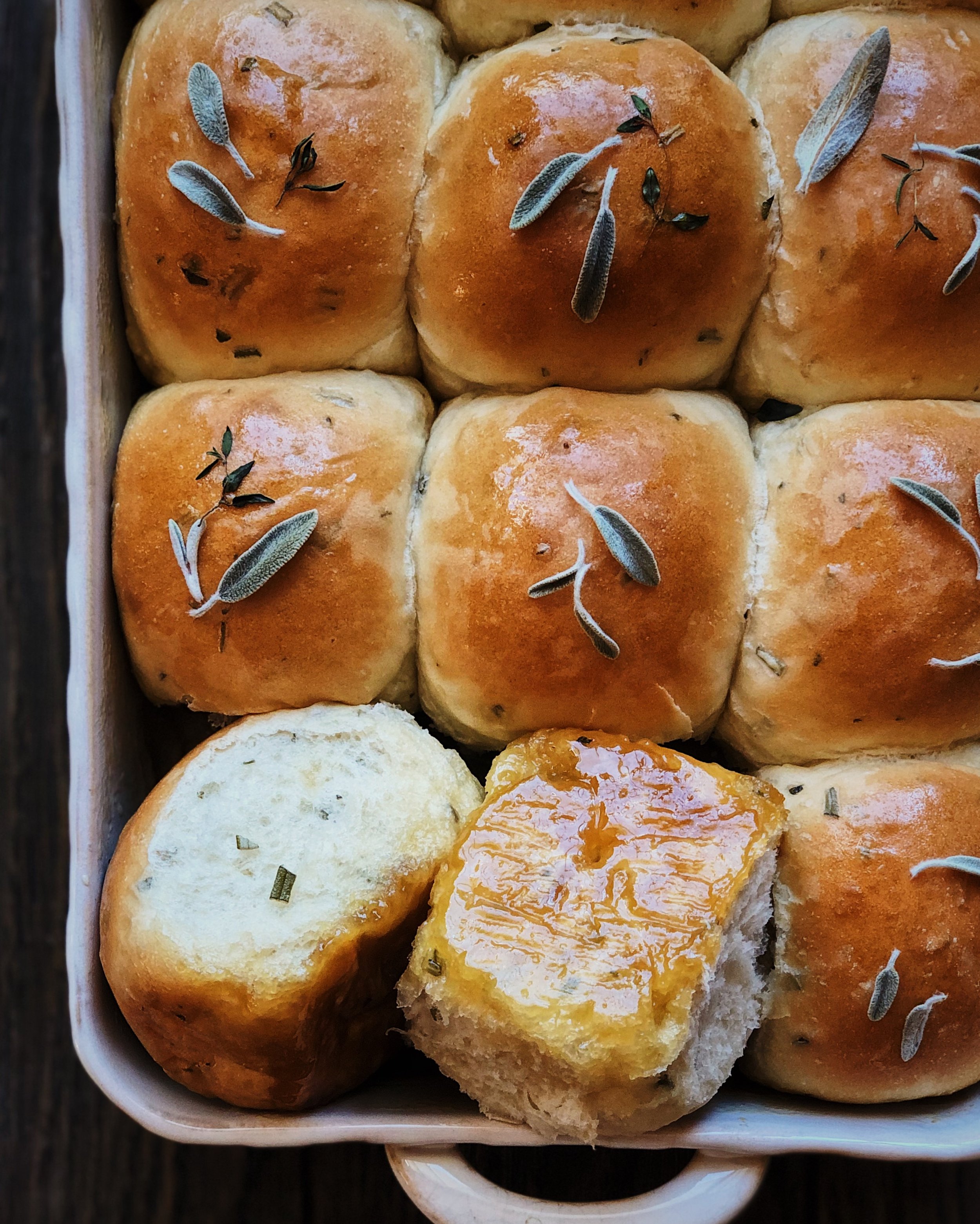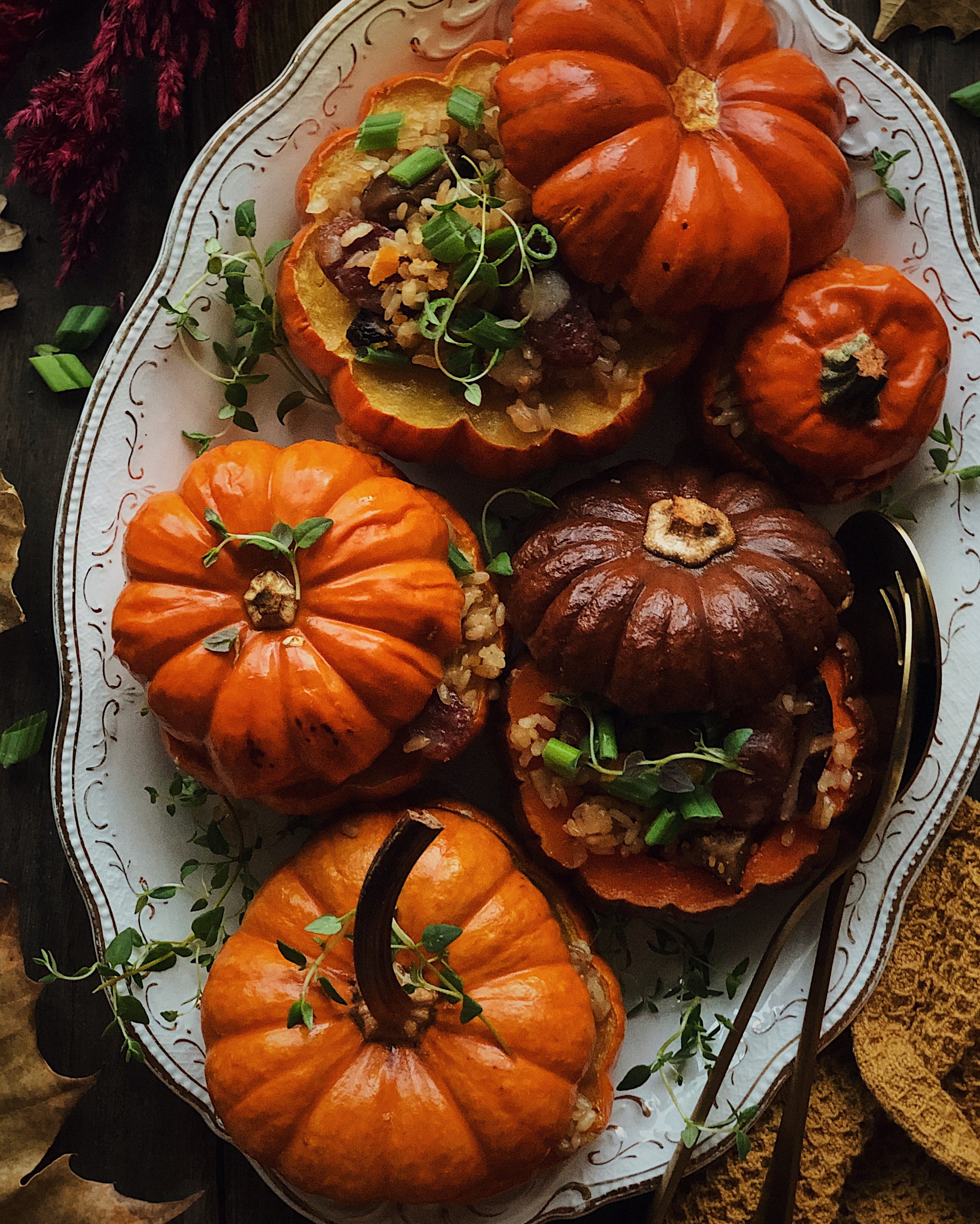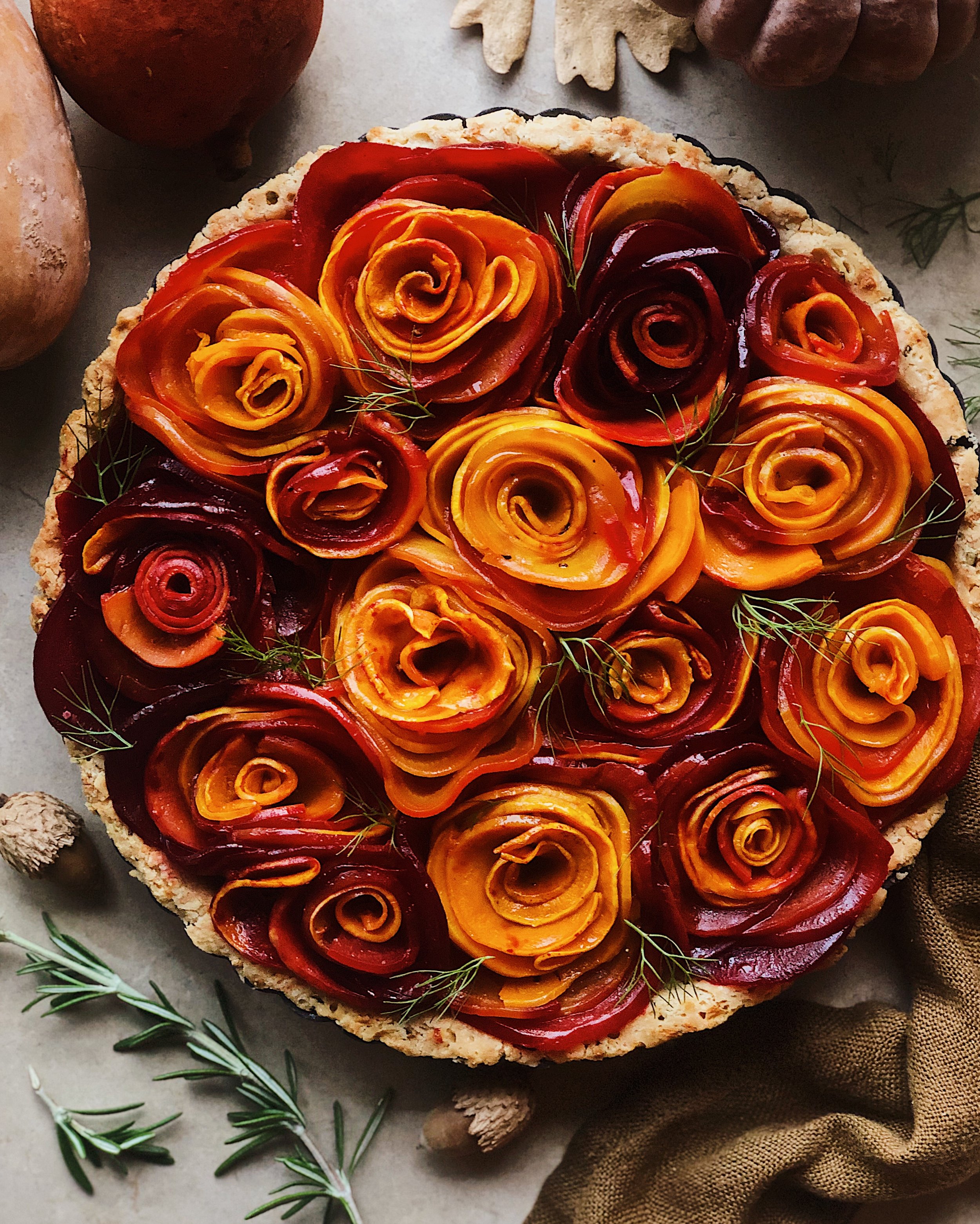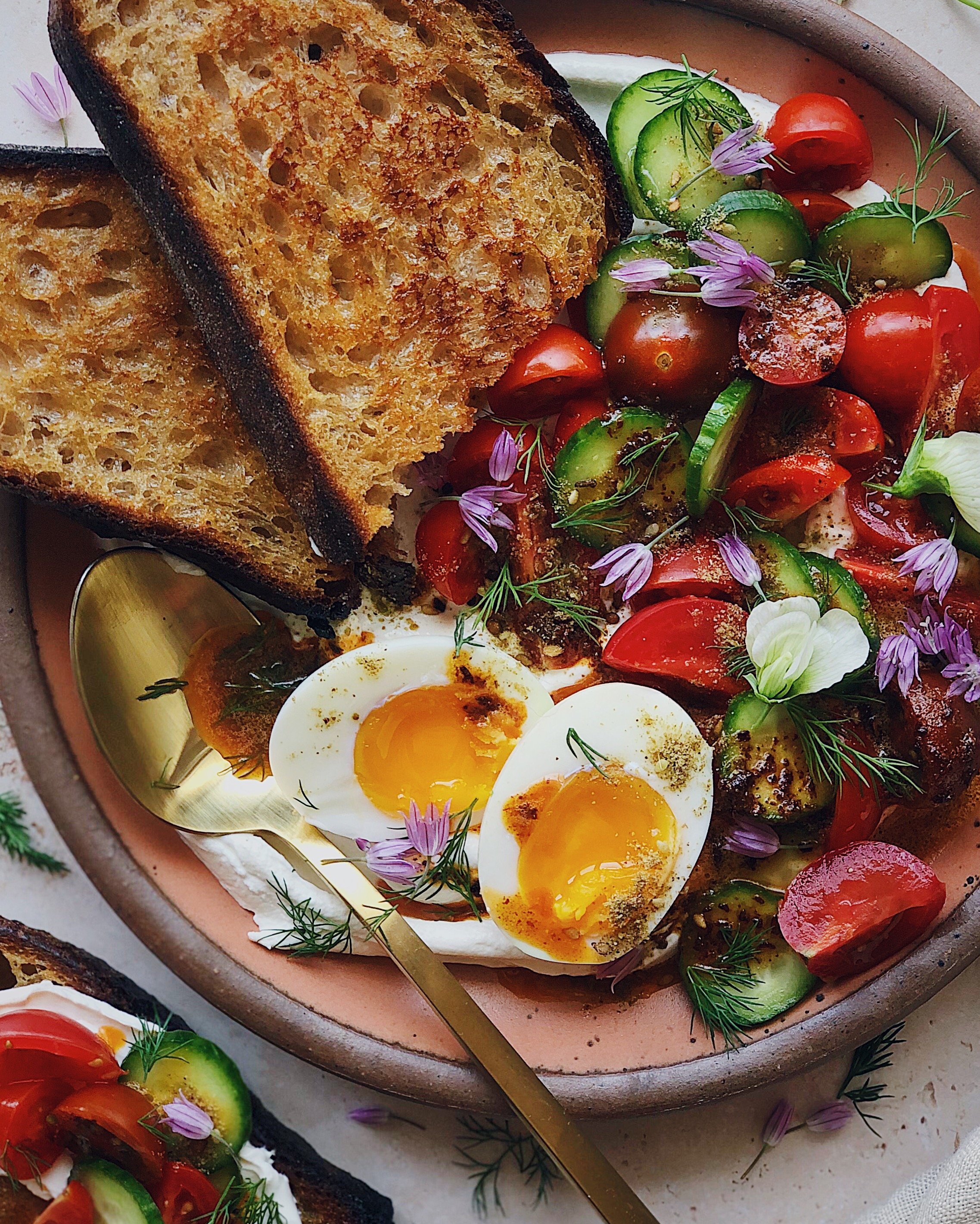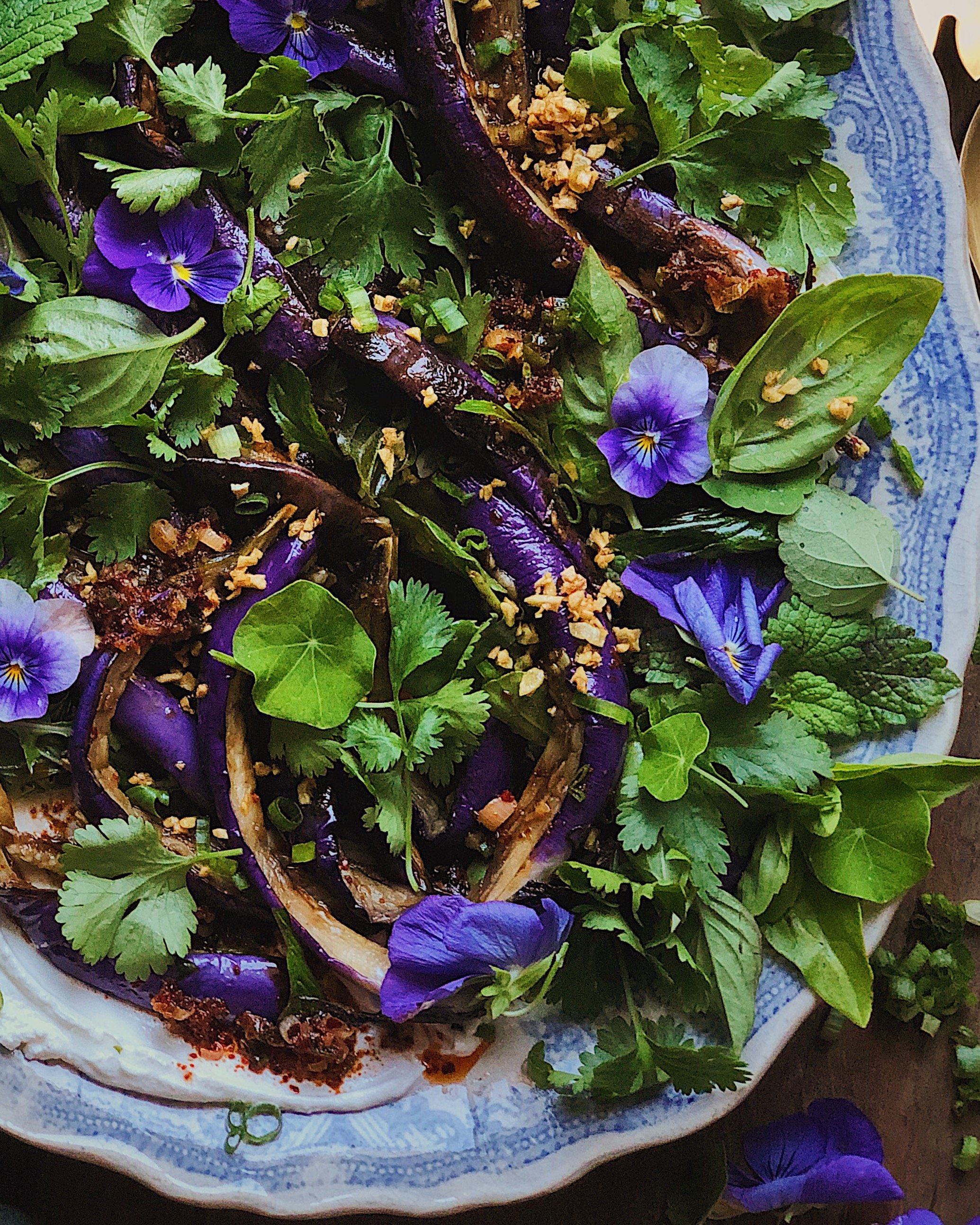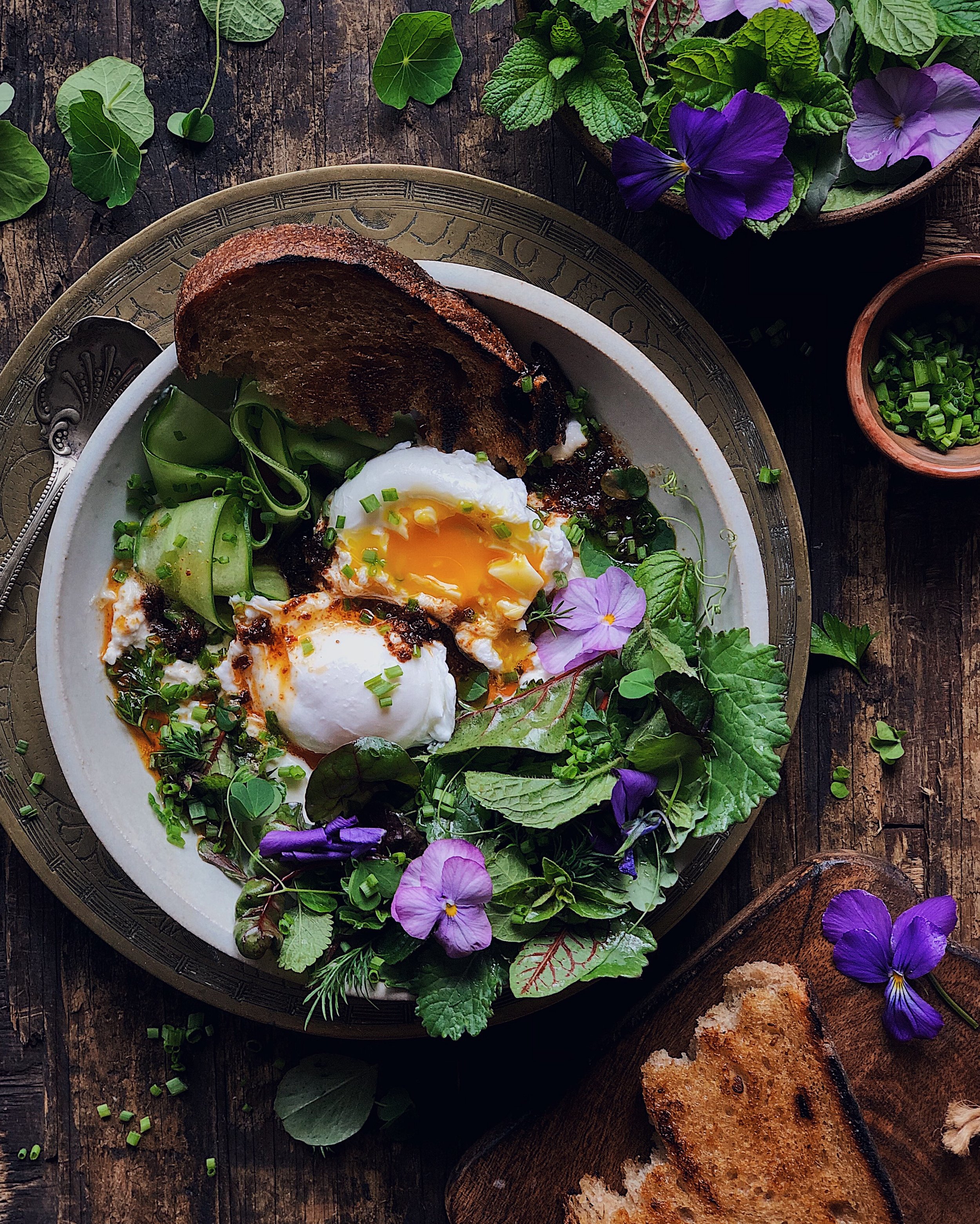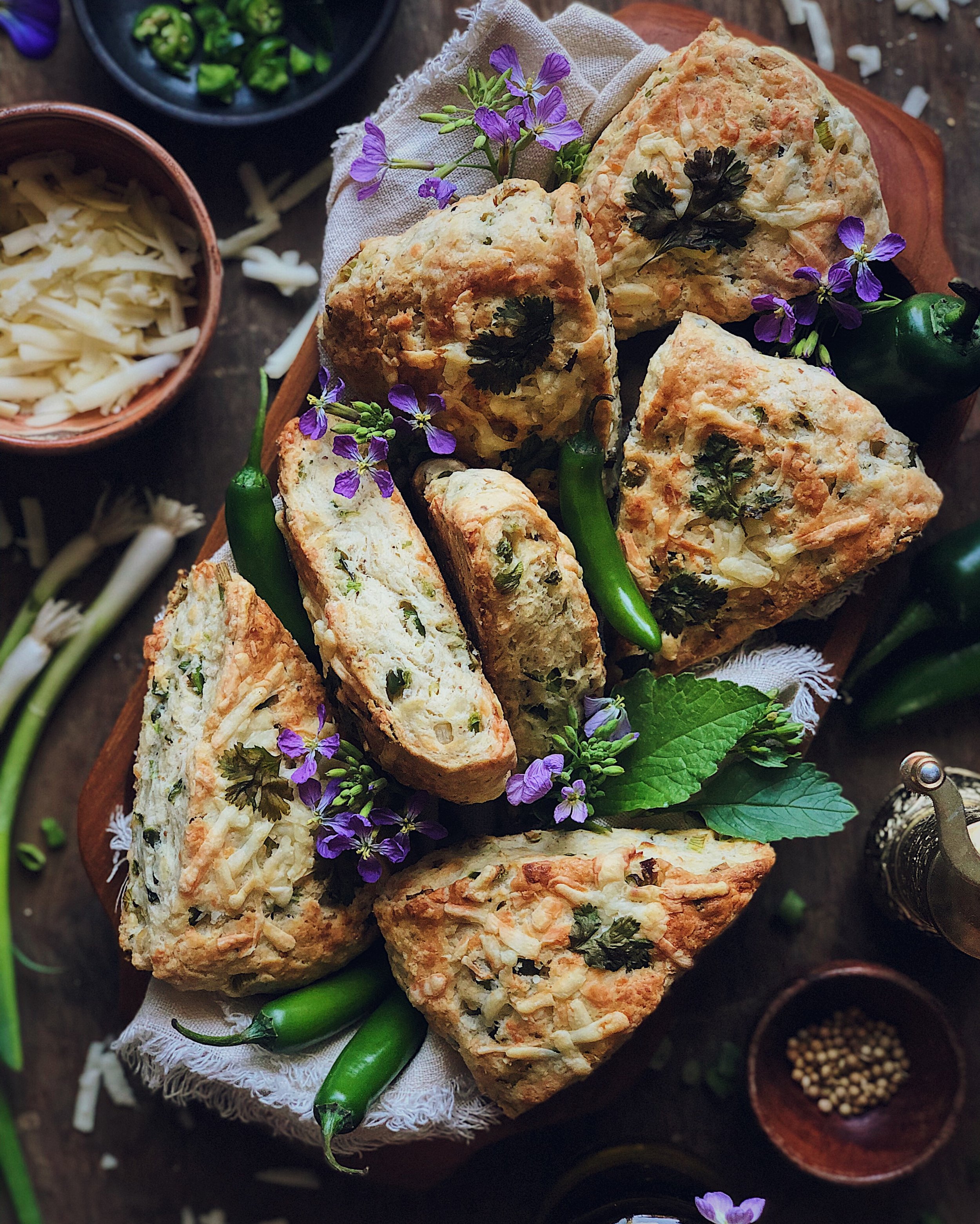Recipe: Chili Makrut Yellowtail Ceviche
/One of my favorite food memories of all time is from a ceviche tostadas stall in Mexico City called Tostadas La Chaparrita in the Mercado de Coyoacán. We had spent several hours waiting in the heat to get into Casa Azul (a.k.a. Frida Kahlo’s old home turned museum) and were desperate for a good bite to eat after a disappointing museum experience. A quick Google search led me to this well-reviewed place but what we got when we arrived exceeded expectations—a wide bar lined with mounds and mounds of all varieties of ceviche, ready to be piled on to crispy tortillas. They were piled up the way spices are heaped in the markets in Turkey or Morocco, but the piles were fresh seafood in every combination imaginable, marinated in lime juice.
I often daydream about those mountains of ceviche but I never thought to try making my own until I learned about The Kingfish Company’s Dutch Yellowtail. It recently became available in the frozen section at Whole Foods Markets and because of the way it is raised and frozen, it is safe to eat raw as a high-grade sashimi when properly thawed. Dutch Yellowtail is sustainably raised in indoor basins on land using pristine water from a marine estuary. It is also a “Green Choice” as recommended by the Good Fish Foundation in the Netherlands. This means that it is raised specifically to be clean to eat and clean for the planet as well! When I took the thawed pieces out of the packaging, I found the fish to be firm and bouncy, with a clean smell. Since Dutch Yellowtail has a mild flavor and firm texture, it is so perfect for ceviche!
Instead of replicating those exact memories of ceviche in Mexico or a traditional recipe from Peru, I wanted to come up with my own take on it, using Southeast Asian ingredients. I took inspiration from the aromatics used in the Malaysian food of my heritage, but I also was inspired by Thai and Vietnamese dipping sauces as I was developing the recipe for my ceviche marinade. I think that a little bit of funk from fish sauce, a little spice from fresh chilies, and bright, aromatic flavors like ginger and makrut lime leaves put such a great spin on ceviche that is distinctly Southeast Asian and therefore, distinctly me!
What you should know about the ingredients:
Dutch Yellowtail: This sustainably raised fish comes from farms run on 100% green energy and with no hormones or antibiotics. Its taste is similar to the hamachi you would find at a sushi restaurant. It absorbs the flavors of the marinade really well, and the longer you keep it in the marinade, the more “cooked” the texture will seem. I enjoyed it both with a brief (30 minute) rest, where the texture was more similar to sashimi, as well as after it soaked overnight. Look for this at Whole Foods Market!
bird’s eye chilies: These are also known as Thai chilies or I grew up calling them chilli padi. I love the instant spicy zing that they impart on Southeast Asian dipping sauces, but I personally find biting into a fresh piece to feel too much like a tiny fireball on my tongue. I picked them out before mixing the marinade with the fish but leave them in if you prefer!
makrut lime leaves: To me, this is what gives this ceviche recipe a unique flavor that is distinct from the ceviches of Latin American countries. (You can read more about alternative names for finding it here.) The leaves are quite hard, so slice them as finely as you can; I like to kind of crush them up a bit with my hand before rolling them tightly to cut a fine chiffonade. Of course, it is okay to leave this ingredient out if you can’t find it, but the dish will not have as much of a unique Southeast Asian flavor.
In the photos here, you can see that I’ve served this ceviche a couple different ways:
Tostadas, inspired by my experience in Mexico City—You can often buy ready-made tostadas in the tortilla section of a grocery store, or you can simply make your own by deep frying corn tortillas in corn oil until they are nice and crunchy.
Toast, my all-time favorite carb based food vehicle—Use whatever is your favorite method for making toast; spreading on a layer of the avocado mash first before piling on the ceviche will help prevent the bread from getting soggy
This ceviche would also be great in little single-serving glasses, or served family style with tortilla chips for scooping. However you choose to serve it, I hope these ideas inspire you to make your own fresh yellowtail ceviche at home!
How to Make Chili Makrut Yellowtail Ceviche & Mashed Avocado
Ingredients for the Marinade
3/8–1/2 cup lime juice (about 4 limes)
2 tsp fish sauce
1 tbsp brown sugar
1–2 bird’s eye chilies, sliced
2 tsp ginger, finely grated
1 clove garlic, finely grated
Ingredients for Ceviche
8 oz Dutch Yellowtail, cut into small cubes (about 1/4”–1/2”)
2 makrut lime leaves, very finely sliced
1/2 shallot, finely chopped
2 sprigs Thai basil leaves, torn
5 stalks cilantro, leaves picked
Ingredients for Mashed Avocado
1 ripe avocado
1/2 lime, juiced
pinch of salt
For serving
prepared toasts, tostadas, or tortilla chips
microgreens, radish slices, or edible flowers (optional)
Procedure
Combine the ingredients for the marinade and let stand for 1 hour. Then, optionally, remove the chili pieces.
Combine the Dutch Yellowtail cubes, makrut lime leaves, shallot, and Thai basil leaves with the prepared marinade. Mix together and let the ceviche marinade in the fridge for at least 20 minutes, or up to overnight, depending on preference. (Over time, the fish will take on more flavor from the marinade and have more of a “cooked” texture.) Add the cilantro leaves after the ceviche has rested to the desired doneness.
Just before serving, slice open the avocado, remove pit, and scoop flesh into a bowl. Add lime juice and salt and mash together to the desired consistency.
Serve the ceviche on top of avocado mash on toast or tostadas, or serve both components with tortilla chips on the side.
Thank you so much to The Kingfish Company for sponsoring this recipe! Visit their website to learn more about how they raise their sustainable fresh Dutch Yellowtail!
Disclaimer: consuming raw or undercooked meats, poultry, seafood, shellfish, or eggs may increase your risk of foodborne illness, especially if you have certain medical conditions.



